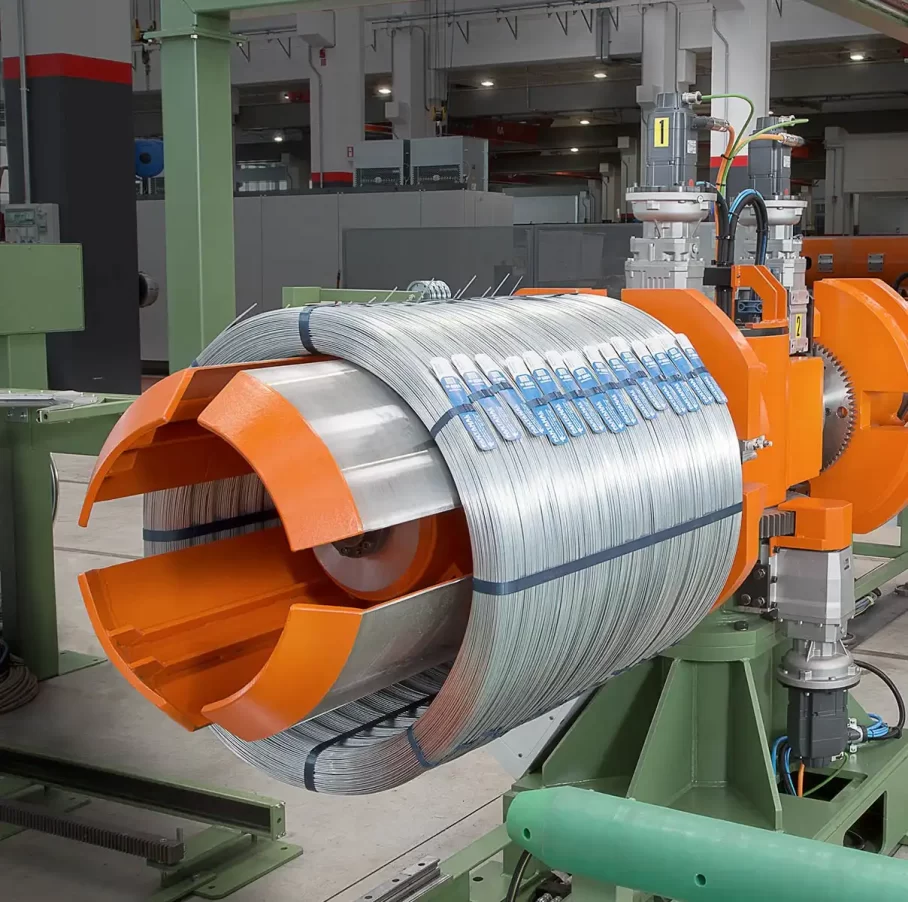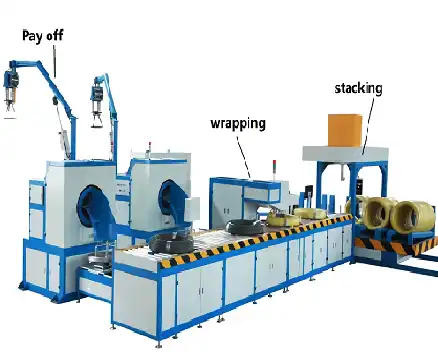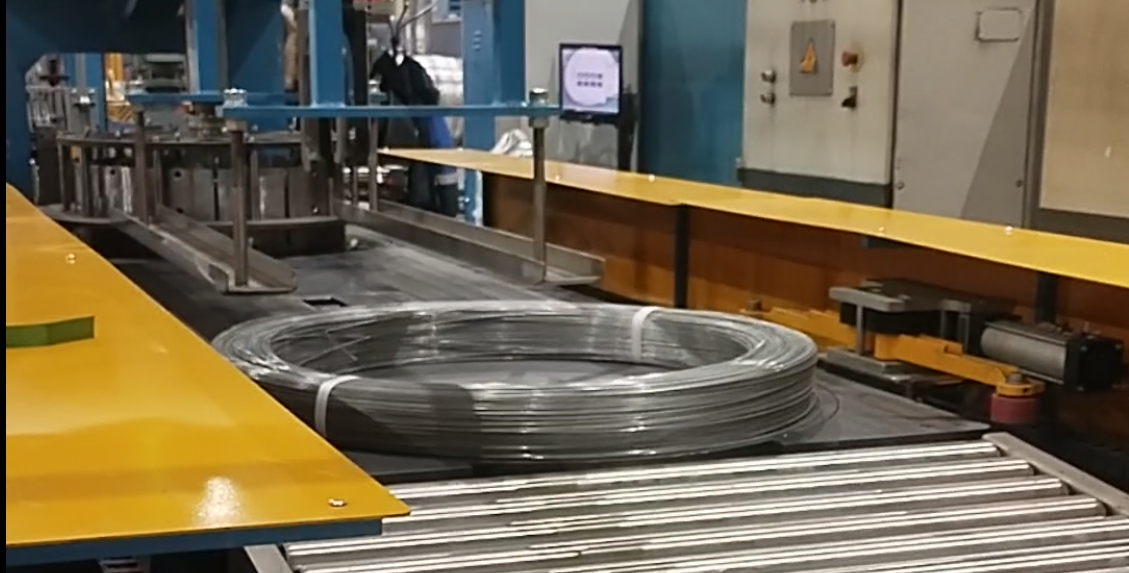What is the Max. Wire Winding and Strapping Speed?
In our industry, speed is everything. We strive to make processes faster without compromising on quality. This article discusses the maximum wire winding and strapping speed. We'll break down the process of coiling and strapping, factors that affect their speed, and how these processes are connected. Understanding this will help us optimize packing operations and ensure smooth, efficient performance.

The Basics of Wire Winding Speed
Wire winding and packing line is a critical part of the manufacturing process for many industries, especially in copper and metal wire production. The maximum coiling speed is often a key factor in determining the overall efficiency of a packing line. The faster you can coil wire, the more efficient your operation becomes.
In our case, the maximum coiling speed is 300 meters per minute (m/min). This means that, at its highest speed, the machine can coil 300 meters of wire every minute. The wire’s diameter and weight play a significant role in determining how much wire can be wound in this period.
Let's take a closer look at how we calculate the length of wire for a 50 kg coil. To determine the length of wire, we need to know the wire's density and its specific weight. Different wire sizes have different properties, so each one will require a different calculation.
Length of Wire per Coil
The length of wire per coil varies depending on the size of the wire. Here are a few examples for different wire diameters:
1.6mm wire: The length of wire for a 50 kg coil can be calculated by dividing the weight by the density of the wire. For 1.6mm wire, you would calculate approximately 200-250 meters of wire for every 50 kg coil.
2mm wire: A 50 kg coil of 2mm wire typically measures around 150-200 meters.
2.24mm wire: For 2.24mm wire, you may expect around 130-180 meters per coil of 50 kg.
2.5mm wire: 50 kg coils of 2.5mm wire might be around 120-160 meters.
3.15mm wire: A coil of 50 kg for 3.15mm wire is usually about 100-140 meters in length.
4mm wire: The length for a 50 kg coil of 4mm wire is typically 80-120 meters.
These figures provide an average estimate for wire length based on the coil's weight. Knowing the length of wire you are working with is crucial for setting up your packing system to maximize speed and efficiency.

Understanding the Packing Speed
Packing speed is crucial in our operations. We want to ensure that the process moves quickly without compromising on quality. There are two primary factors to consider when determining packing speed: the speed of the wire winding and the time it takes to strap each coil.
In our setup, the number of straps per coil is typically 2, 4, or 6, depending on the type of wire and its application. Each strap takes approximately 15 to 17 seconds to apply. So, we need to consider both these times when calculating the packing speed.
Strapping Speed
Strapping is another important part of the packing process. The goal is to ensure that the wire coil is tightly secured and that the strapping is done efficiently. Each strap takes between 15 and 17 seconds to apply, depending on the machine's speed and the type of strap used.
For example, if you're using two straps per coil, the total time for strapping will be 30 to 34 seconds. If you're using six straps, the time required will increase proportionally, making the strapping process a bit slower.
The number of straps per coil affects the total time needed to finish packing. More straps will naturally take longer. However, it is essential to balance the need for secure packing with the desire for speed. Too few straps might not provide enough security for the coil, while too many could slow down the packing process.
How Packing Speed is Determined
The packing speed is determined by whichever process is slower. In most cases, either the wire winding speed or the strapping speed will be the limiting factor.
- If the wire winding speed is slower, it will dictate the overall packing speed.
- If the strapping process is slower, that will set the pace.
For instance, if your machine winds wire at a speed of 300 m/min but the strapping process takes 15 seconds per strap, the total packing speed will be limited by the strapping process.
Thus, we need to balance both steps. If we can speed up the strapping process without compromising quality, we can increase the overall packing speed. Alternatively, improving the wire winding speed could also help to speed up the packing process.

Dive Deeper: The Interplay Between Winding and Strapping Speeds
Let’s dive deeper into understanding how the two processes interact. The wire winding speed and strapping time are both critical, but they work together to determine the efficiency of the packing line. It’s important to remember that the packing process is like a relay race. If one step is too slow, it holds up the entire process.
Optimizing Wire Winding
To optimize the wire winding, we need to consider a few key factors. First, the thickness and weight of the wire will affect the speed at which the machine can coil it. The thinner the wire, the faster it can be wound, but the coil may take longer to complete due to the volume of wire needed.
Another key factor is the type of machine used. Some coiling machines are faster than others, and newer models may offer higher speeds or more automation. Regular maintenance of the machines is also essential to maintain optimal speeds and avoid costly downtime.
Optimizing Strapping
For strapping, the key is to find the right balance between speed and security. Using the right type of strap, ensuring the machine is properly calibrated, and reducing the time between each strap are all ways to optimize this process.
The number of straps per coil is also an important factor in determining packing speed. For a typical coil, two to four straps are usually sufficient, but for larger or more delicate coils, additional straps may be necessary. Strapping machines can be programmed to adjust the number of straps, which can speed up or slow down the packing process.
Combining the Two for Maximum Efficiency
In order to achieve maximum efficiency, we need to optimize both wire winding and strapping speeds. This means considering not just the machine speeds, but also the layout of the packing station and how the processes interact with each other.
Practical Applications in the Industry
In real-world applications, the interplay between winding and strapping speeds can have a significant impact on the overall packing process. As a manufacturer, it’s essential to continuously evaluate both processes and make adjustments as needed. Whether it’s upgrading equipment or tweaking the machine settings, every change can have an impact on the packing speed.
Conclusion
In conclusion, understanding the maximum wire winding and strapping speeds is crucial for ensuring efficient packing operations. The maximum coiling speed of 300 m/min is a good benchmark, but we must also consider the time required for strapping, which can vary depending on the number of straps used. Ultimately, the packing speed is determined by whichever process is slower—whether it’s winding or strapping.
By optimizing both the wire winding and strapping processes, we can achieve the maximum packing speed and improve the efficiency of our operations. Constant monitoring and adjustments are key to staying competitive in the industry.
Remember, faster isn’t always better. It’s about finding the balance that works best for your specific application. The goal is to ensure high-quality, secure packing while maintaining an efficient and speedy process.